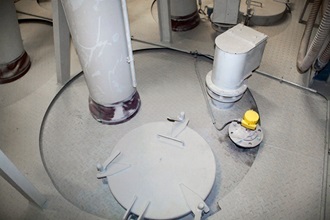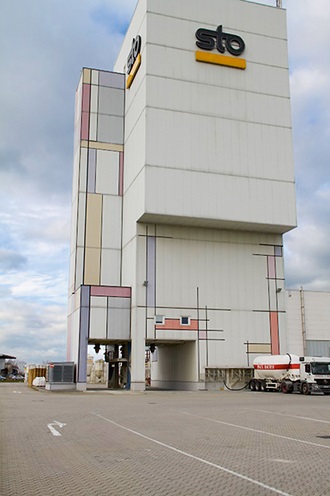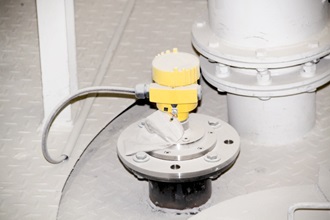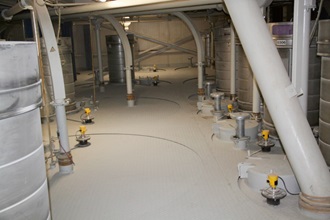VEGAPULS 69 replaces silo weighing systems at building materials supplier Sto SE & Co. KGaA
Punctuality is a top priority at building materials supplier Sto and it depends entirely on the availability of reliable data on the raw materials and finished products in stock. The readings from the silos are now provided by the radar level transmitter VEGAPULS 69.
Stucco is like a protective skin on the façades of buildings. It not only ensures that colors on buildings get the right tone and surfaces a certain texture but also plays a significant role in protecting the climate. The products from Sto, Stühlingen, have been successfully used for façade insulation for a long time. In the period from 1965 to 2015, Sto façade insulation systems saved heating energy equivalent to 85 billion liters of oil. That means that around 264 million tonnes of CO2 were prevented from entering the atmosphere.
When it comes to stucco, different climates and construction/processing requirements as well as the ideas of architects and builders have to be taken into consideration. It is not surprising that the company has approximately 30,000 different products in its portfolio. The Sto location in Tollwitz supplies central and northern Germany with dry products such as e.g. adhesives and composite materials, upon which paint or stucco for façade insulation is applied. The delivery of raw materials to the manufacturing facility and the dispatching of finished products have to be carried out quickly.
Reliable inventory control
The material planning department has to know exactly what raw materials are available in what quantities and when; the same applies to the finished products. Despite the impressive size of the company, its storage facilities are limited. The products are stored in different silos. Raw materials like sand and cement are stockpiled in outdoor silos, while the finished products are stored in silos in an adjacent building. The silos were equipped with load cells for inventory control. However, this measuring method was not always reliable. Discrepancies of two or more tonnes were common. Another problem was the tremendous weight of the silos themselves: over 100 tons. When they were completely filled, inaccurate measurements often resulted.
This photo shows how narrow the silos are and why VEGAPULS 69 performs so well. There is hardly any room for the sensor, yet its narrow beam angle allows it to work reliably in spite of that.
Sto got informed about different measuring systems offered on the market. It soon became clear that only radar measurement technology would be a viable solution. The company eventually came across VEGAPULS 69, which had been introduced to the market in 2014. Despite having had no experiences with VEGA, Sto installed the radar sensor on a trial basis in mid 2015.
The sensor is now being used in more than 10,000 installations worldwide. Its key advantages are its high transmission frequency of 80 GHz and antenna size of about 75 millimeters with a beam angle of only 4°. This allows the 80 GHz beam to measure reliably right past internal installations or buildup on the vessel wall.
After a three-month test phase, VEGAPULS 69’s performance was carefully evaluated and found to be convincing in every way. That’s why Sto decided to equip not only the finished product silos with VEGAPULS 69, but the raw material silos as well. The goal was to use the same sensor everywhere, in order to make plug-and-play deployment possible and, if necessary, allow a sensor to be moved quickly to another silo.
Almost all the sensors worked reliably right from the start and delivered accurate readings. Since VEGA instruments indicate filling percentages, a program converts these values into tonnages. The inventory management system administers these results and provides additional data security. The only silo that gave the technicians some headaches was the one holding raw materials with extremely low bulk density. Such materials are very difficult to measure and up to that point no sensor had worked reliably. One of the problems, for example, are the welding seams of silos, which generate false echoes. Even the echo curves of empty silos are extremely complex. "Together with VEGA we positioned the sensor differently and changed its orientation. We also adjusted the parameters again. Since then, this measuring point works perfectly."
Export this article
Download as PDFShare this article
Comments ({{comments.length}})
{{getCommentAuthor(comment, "Anonymous")}} {{comment.timestamp | date : "dd.MM.yyyy HH:mm" }}
{{comment.comment}}









